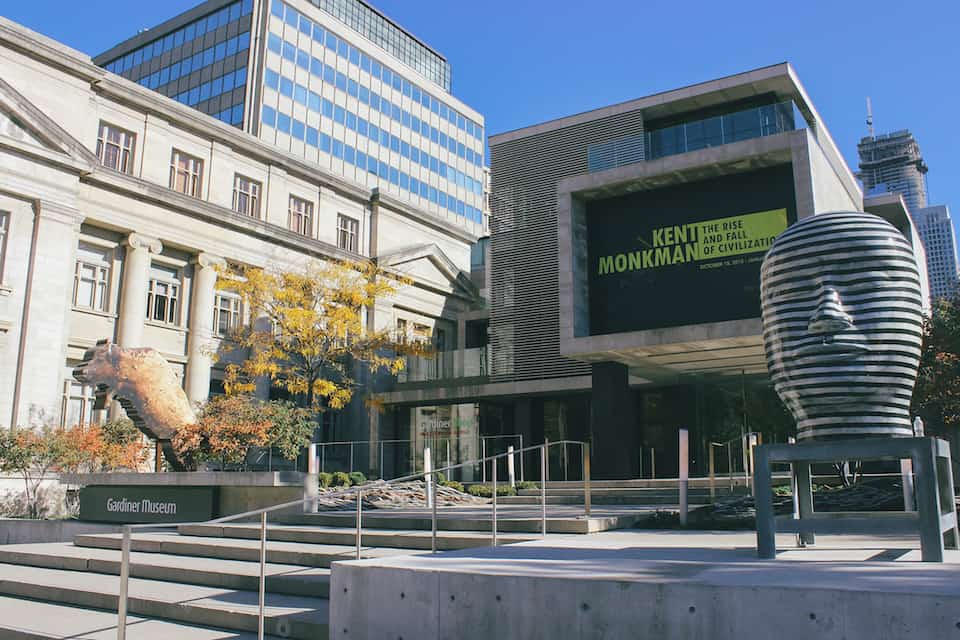[dropcap]I’ll[/dropcap] admit, I don’t really understand a lot of art. I routinely struggle, for example, to find meaning in a canvas that is merely covered in yellow, blue, and red squares (Piet Mondrian, I’m looking at you).
Lucky for me then, that Kent Monkman’s The Rise and Fall of Civilization had a relatively obvious, yet no less important, point to make. On display at the Gardiner Museum until January 10, this installation is simultaneously a stark reminder of North America’s colonial legacy and a testament to indigenous survival against all odds.
In the Gardiner’s 3,500-square foot special-exhibition gallery, Monkman has recreated the “buffalo jump,” a cliff formation used by indigenous people of the North American plains to hunt buffalo. At first glance, the installation was slightly underwhelming — the cliff, though about nine feet high, only took up a little space at the back of the room and left the rest of the gallery feeling empty and hollow.
However, it is in the exhibit’s details where Monkman’s message swells to the fore. Take for instance, the pile of smashed ceramics that lay at the base of the cliff, representing a clear condemnation of how European settlers nearly decimated the bison population in North America in order to make luxurious bone china.
The settlers’ wasteful practice of leaving bison meat to rot, not to mention state sanctioned bison hunting to make space for settlers’ cattle ranching, deliberately eliminated indigenous peoples’ primary food supply and robbed them of their land. In this context, the meaning behind the installation’s title becomes clear: the rise of settler colonies like Canada came at the price of the indigenous existence. Such colonization is hardly a bygone historical phenomenon — resource extraction projects like Keystone XL or the Enbridge Pipeline often fall into oppressive colonial dynamics by impeding on indigenous sovereignty and desecrating traditional lands.
This being said, Monkman does not seem wholly pessimistic. There are several bison sculptures, a likely representation of the indigenous people, which rise from the broken shards of china that boldly resist concerted efforts of massacre. More bison, painted in various artistic styles along the gallery walls, create two circles — this is a nod both to the sustainability of indigenous bison hunting, and the “continuous cycle of renewal and creativity that embodies [indigenous peoples’] spirit of resilience.”
It is also worth highlighting Monkman’s clever spin on Western art traditions, which have historically oversimplified indigenous culture. In the pile of ceramics sits a china bicycle seat, which reverses colonial narratives by depicting an indigenous woman atop a horse whipping a fallen cowboy. More broadly, the whole installation feels like a typical museum diaroma, yet it is critical of European settlers rather than glorifying them.
Perhaps most notable is the presence of Miss Chief Eagle Testikle, Monkman’s two-spirited alter ego. While it is unclear why her arm is outstretched, her mere appearance functions much like the installation overall — defiant of colonial oppression by proudly embodying indigenous resilience.


